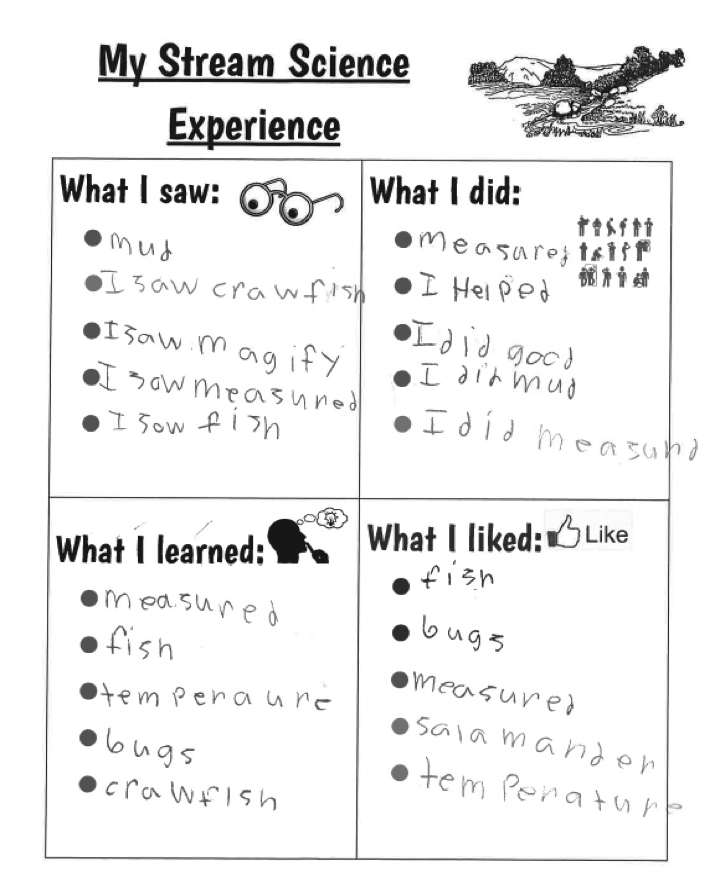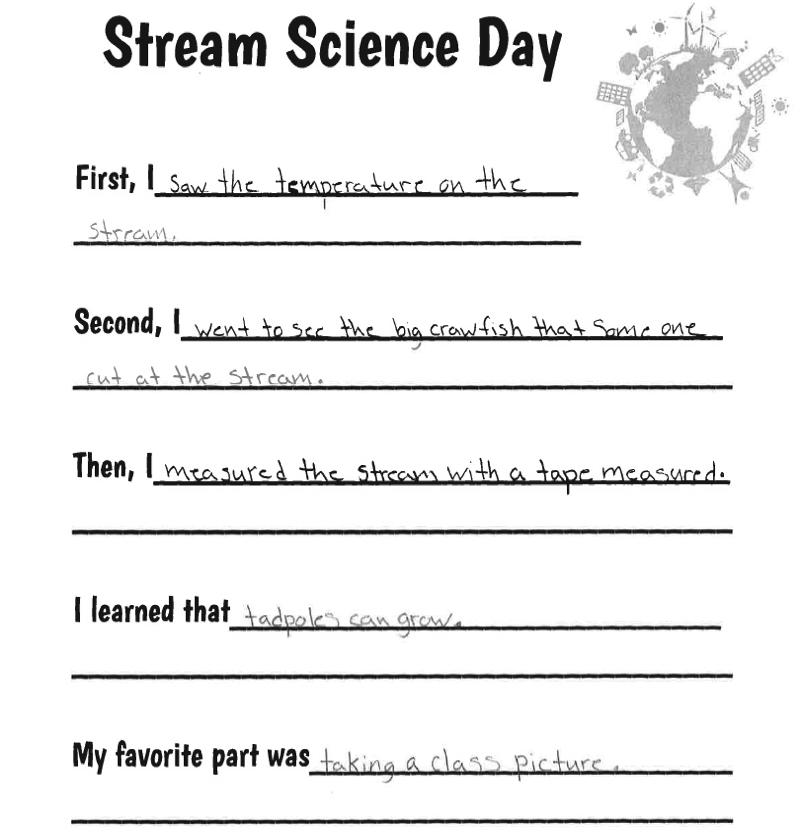Diversity and Equity
STEMing the Flow for All
Connected Science Learning April-June 2019 (Volume 1, Issue 10)
By Brent Gilles, Tim Hawig, Ashley Sutton, and Stacey Britton
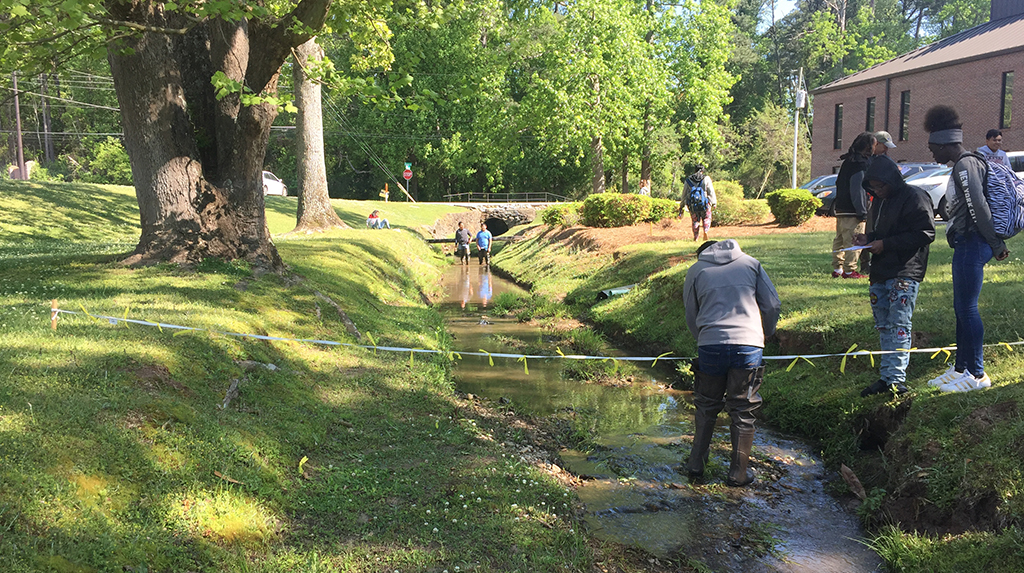
Students with special needs traditionally have fewer opportunities to engage in hands-on learning during science class (Melber and Brown 2008). The reasons for this vary, but typically stem from teacher misconceptions about the types of activities in which students with special needs are capable of engaging. The National Science Foundation has indicated underrepresentation of individuals with special needs in STEM (science, technology, engineering, and math) careers (2004), with a prevalence of misconceptions by teachers and employers, especially toward students who are blind or visually impaired (Fraser and Maguvhe 2008). Despite these misconceptions, students with special needs can engage in science in meaningful ways that enrich their experiences. These students have no less capacity than their peers to understand and make positive changes in their communities as a result of being scientifically literate (Kontra et al. 2015). Fortunately, increasing use of technology in education has helped bridge the gap between students with special needs and their peers (Ngubane-Mokiwa and Khoza 2016). We contend that students with special needs have valuable contributions to make in STEM, and our suggested approach allows these students to become valued team members who make contributions to a community impact project. In our approach, implemented at a high school in Georgia, we paired students with special needs with general education students so that they received one-on-one mentoring and support. The pairing enabled students with special needs to quickly engage in scientific practices such as carrying out an investigation, analyzing data, and constructing explanations (NGSS Lead States 2013). This also enabled them to participate in field experiences without extended instruction and cues from teachers.
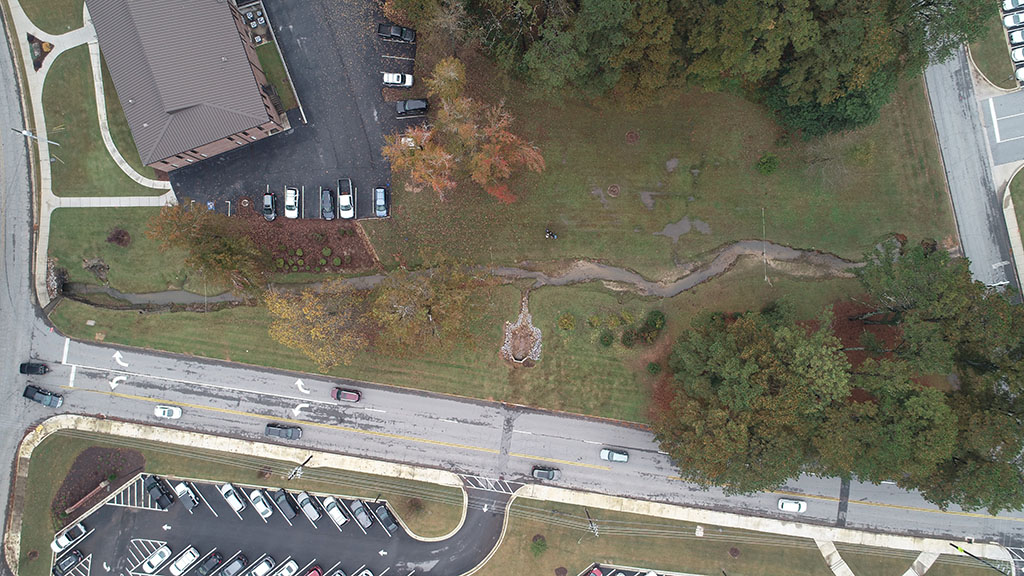
The project in which we used this method was a collaboration between the local high school and community science experts who needed field data for future projects involving the local habitat. The activities took place at Carrollton High School in Carrollton, Georgia, a suburban area with a diverse population of approximately 25,000 people. Students at Carrollton High School are 17% Hispanic, 1.9% Asian, 29% black, and 46% white, and 5.2% multiracial, with approximately 47% eligible for free or reduced-price lunch. The general education students were enrolled in an ecology class designed for freshmen who were not yet ready to take biology, a state-tested subject. The freshmen are placed in the ecology class based on seventh- and eighth-grade teacher recommendations, which are in turn based on standardized test performance and lexile reading scores. This class included a significant number of students from groups underrepresented in STEM careers (Latinx, African American, female); in our experience, these students were particularly influenced by their field investigations and truly gained a new level of awareness for STEM while working alongside students with special needs.
The students with special needs served by this project came from a self-contained, special education classroom where they learn modified and adapted versions of grade-level standards. Students who are served within this self-contained setting may be diagnosed with mild to moderate intellectual impairments, visual impairments, orthopedic impairments, and communication deficits. These students’ collaboration with their general education peers for this science investigation is significant, because it means that the special education students were learning grade-level material, with minimal modifications. The students with special needs were able to practice their communication and social skills in an academic setting, while their general education peers learned how to work effectively with all types of learners.
Carrollton High School has an AdvancED STEM certification, is well known for an engineering pathway, and is situated directly across from a stream that was used as the focal point of this investigation. The goal for our students was to collect baseline data, which began with making detailed observations, for the watershed of the stream nearest their school.
As part of this collaboration, STEM experts worked with all students to help them understand how the data would be used in decision-making, while encouraging them to think about STEM careers in ways that may have previously been unfamiliar. Prior to field investigations, science education faculty (with backgrounds in Earth and life sciences) worked with students and teachers to facilitate a structure for outdoor learning and provide insight into activities that would emphasize certain aspects of the watershed and benefit students of varying backgrounds. The life science education faculty had worked with the content teacher on multiple occasions to bring in new approaches and ideas for teaching biology and environmental science, so this project was a continuation of that relationship. The second science education faculty member joined the group due to his interest in aquatic environments and expertise in teaching these concepts to students and teachers. The university faculty made contact with the local Natural Resource Conservation Service to expose students to working STEM professionals who took part in other outdoor learning activities with the regular education students. The stream restoration expert approached the school system with the goal of helping them develop a natural stream environment that includes an outdoor classroom; as a result of this interest, he spent countless days throughout the year working with the content teacher in his classroom. Additionally, he made himself accessible to students during the span of this project, walking the creek, engaging in the activities described below, and talking about how these things exist in his daily occupation.
Project overview
The purpose of the activities was to collect data for a stream remediation specialist to make changes to a stream causing flood issues on school grounds. The place-based nature of the project provided students with a way to connect with their local community and understand why the work they were engaging in was important (Tolbert et al. 2016). The project design provided both general education students and students with special needs with the opportunity to participate in meaningful activities, similar to those in which STEM professionals engage. Additionally, the design exposed all students to multiple career fields that may otherwise be deemed unavailable due to their limited access to general education classrooms, knowledge, or experience.
Through a focus on watershed analysis, the teachers were able to integrate biology, chemistry, physics, environmental sciences, and engineering through the exploration of the stream’s health. The class performed cross-sectional profiles for an assessment of water velocity and volume. They also conducted transects and macroinvertebrate identification in an effort to categorize and analyze the plant and animal populations of the nearby terrestrial versus aquatic ecosystems.
Stream preparation
Prior to the stream experience, we surveyed the students with special needs to find out what they knew about the stream. They could identify simple features of streams such as fish, water, and rocks, but did not identify vegetation or macroinvertebrates. As a result, videos were chosen as the best means of introduction and covered the topics of macroinvertebrates, erosion, stream flow rate, and stream conservation. Each of the videos was followed by a class discussion that introduced students to concepts from the videos and provided further information on what they would experience during their time at the stream. The students were then provided prompts to encourage them to ask questions when they saw something they did not know or understand. This approach was chosen because it allowed the students with special needs to make immediate contributions, and provided time for them to prepare for the change to their normal routine. Via direct instruction and role-playing activities, they were also provided with social-skills instructions for working with their general education peers. Additionally, concepts related to water safety were introduced to promote more in-depth conversation and help ensure that they were equipped for the stream investigation. The general education students received brief instructions on engaging with their special education peers. The instructions included reminding them to be patient and to be attentive and receptive to the special education students’ questions, comments, and physical needs entering and exiting the stream.
Stream engagement
Once the students with special needs arrived at the stream, they were briefed about the project by the biology teacher and were paired with their general education peers. The general education students had already been conducting work at the stream and were more familiar with the tasks that needed to be accomplished. The student pairs began measuring the stream, investigating the depth of the water, gathering river bottom samples, and sorting through the samples to locate living organisms. For the students with special needs, this was a departure from their normal routine and a unique opportunity to engage in an outdoor learning experience with their peers. They were visibly excited by the experience and eagerly shared their thoughts with their partners. For example, during a measuring activity (discussed below), one of the groups did not have access to the tapes or metersticks that would allow them to accurately mark the ropes for cross-section measuring. After a brief discussion on how to move forward, one of the young ladies with special needs asked the biology teacher if they could “just use the other marks,” as a reference, so they could finish labeling sections of the rope. The problem-solving skills she exhibited were especially eye-opening for the group, including the biology teacher and university faculty because she was processing multiple concepts and working through higher-level cognitive processes. Once given affirmation that it would work, she was then able to explain to the rest of her group how they could accomplish their new task in a different way than originally planned.
Stream investigation details
The activities related to the stream investigation, which are described below and in Table 1, were chosen because of their importance to making healthy changes to the stream. During many of these activities, both groups of students worked alongside community partners (such as a stream remediation specialist, a local farmer, a soil conservation specialist, a surveyor, and two university faculty members who specialize in life/environmental science and meteorology) to make decisions on how to make repairs that would best benefit the ecosystem based on the data collected. The interdisciplinary nature of the project allowed both groups of students to engage in scientific and engineering practices, and become familiar with STEM career activities in the fields of ecology, biology, and chemistry.
Table 1: Students and STEM experts involved in each activity
| Activity | Community partner | Student investigators |
|---|---|---|
| Mapping technology: Exploring online maps of the stream to evaluate health and physical parameters | Biology teacher | General education students |
| Stream preparation: Introducing students with special needs to items found at the stream, appropriate behaviors, and actions taken when around water | Special education teacher | Students with special needs |
| Profiling and surveying: Walking the stream to observe features that are beneficial or harmful to plant and animal populations | Classroom teacher, stream remediation expert, local university faculty | General education and special needs students |
| Probe training and chemical analysis: Use technology to measure temperature, pH, and dissolved oxygen of the waterway | Local university faculty | General education and special needs students |
| Macroinvertebrate analysis: Done three separate times over a period of three weeks. Observe changes in the number and variety of species present as spring progresses. Our students became better at capture and release, measuring, and gender identification. | Stream remediation expert, classroom teachers, local university faculty | General education and special needs students |
Stream profiling and surveying
The first task was for both groups of students to understand the geography of the riparian zone around the stream. Through detailed observation of the stream and physical features of the land, especially erosion, students were able to begin the process of understanding this watershed. As a practical approach to surveying and profiling the stream, wooden stakes were placed along each side of the stream at intervals of 30 feet (9.14 m), and a rope was then tied to the stakes opposing one another on either side of the stream. These ropes were provided by the biology teacher and previously marked at intervals of 20 cm (an alternative measuring opportunity recognized by the young lady with special needs mentioned earlier in this article). The small increment of measurement was chosen to provide a more accurate measure for all students to observe and record land changes, as the streambank experiences extreme erosion. It should be noted that standard of measure was discussed with all students once they returned to the classroom, and the decision was made to convert the larger, 30-feet interval to meters. To create accurate markings, all students were given access to measurement materials. A first approach involved paint being applied to the rope, but it was hard to see and not environmentally friendly. Therefore, a group of students came up with the idea of tying yellow cloth tape to the rope.
Integration of technology for mapping the ecosystem
The general education students compared the effect of riparian zones on water quality, using Google Maps and historical data to analyze changes in human impact and space allocated as streambanks. All students examined how “buffer zones” along the streambank might influence water quality by collecting direct and indirect data. Satellite photos from Google Earth, old maps, and photos, which are often difficult to locate, were used as indirect pieces of evidence. The general education students then used the information collected through the activities explained in the following sections to build a claim about the health of the stream. This aspect of the project was important to our stream remediation expert because his goal was to return the habitat to a previous healthy state; it also provided all students with real-world context and experience with authentic skills used by STEM professionals.
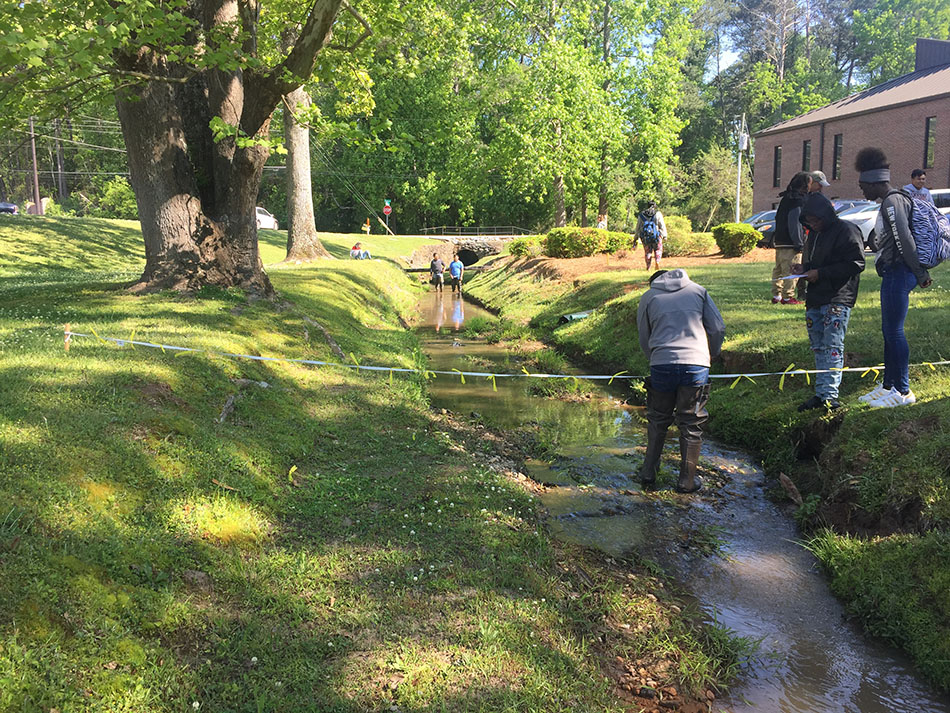
Macroinvertebrate index
A survey of existing macroinvertebrates was conducted to understand stream health; macroinvertebrates are highly sensitive to even the slightest levels of pollution and serve as excellent water quality indicators. All students used D-ring nets and a seine net to collect macroinvertebrates from various stream depths. Although some crayfish, small fish, and larger macroinvertebrates were found, macroinvertebrates tend to be small, so microscopes were needed for most observations; access to power sources limited microscope use and prevented most field identification of the smaller organisms until return to the lab. Fortunately, the presence of the crayfish provided evidence that the stream, from a biological standpoint, is healthy, as this species tends to have a low tolerance for pollution. However, many of the general education students noted that the erosion occurring downstream of our site was a threat to the stream’s health.
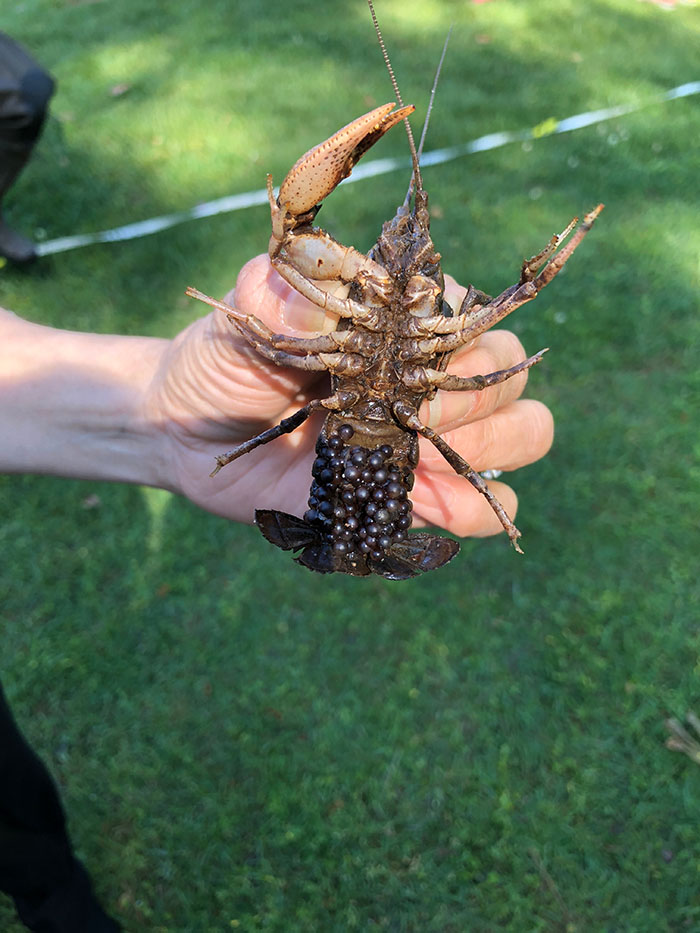
All students worked together to use aquatic nets to collect samples. Once samples were obtained, they sifted through the collected water to identify rocks and macroinvertebrates. Although their interest was sustained throughout the entire activity, it became even more elevated with the inclusion of camera magnifiers to capture video of the macroinvertebrates they located. This increased excitement and learning as all students enthusiastically shared what they had found, especially while examining a crayfish and small fish that were gathered from the stream. All students used magnifying lenses to observe crayfish and fish in more detail, including eggs that some crayfish happened to be carrying on their undersides. Students were even able to see embryos inside the eggs attached to the crayfish body. Once the field experience ended and students returned to their classrooms, the students with special needs were able to revisit their findings by watching the videos recorded in the field.
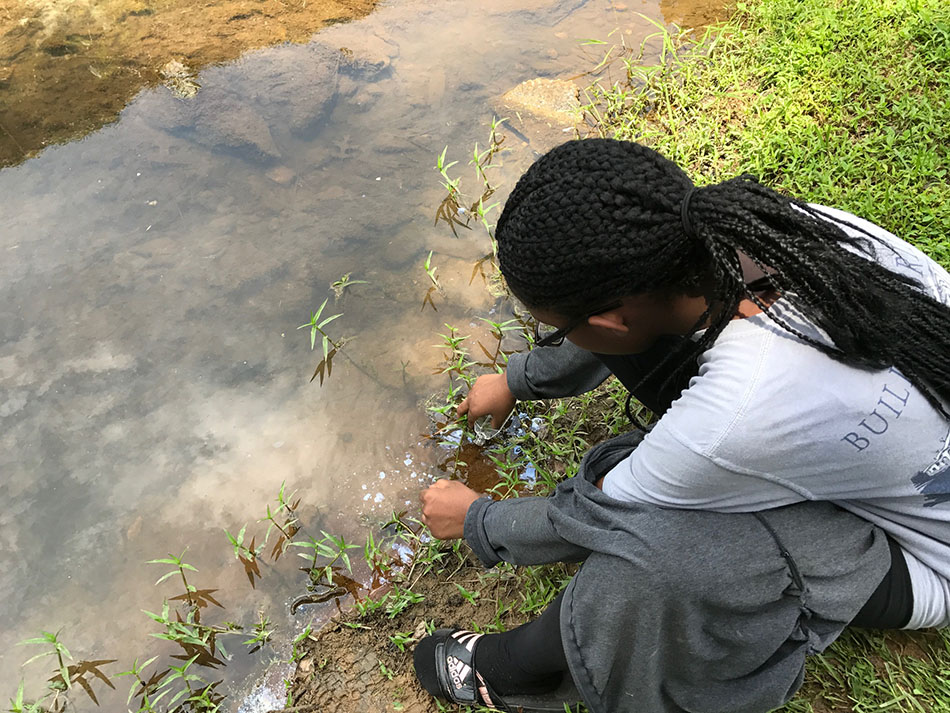
Integration of technology for chemical analysis
The use of technology to assess stream chemistry is common in many different professions where water chemistry data are used to ascertain the overall health of the stream. Vernier probeware was used because of its applicability and ease of use. Additionally, we used the Water Quality Index (WQI) to help all students quantify the chemical health of the stream. The weighted index was created by Brown et al. (1970) to compare bodies of water and includes the following parameters: alkalinity, total solids, dissolved oxygen, turbidity, temperature, chloride, coliform, phosphorus, and nitrate. We chose to use eight of the nine parameters (due to the lack of appropriate equipment to measure phosphate); the general education students were taught how to modify the index when they only have data for eight of the nine parameters. The use of this index aided all students in understanding the condition of the stream and allowed them to make comparisons to other streams in the area. Chemical analysis is an essential component in assessing stream health and making decisions regarding the watershed. The chemical analysis revealed the stream water to be healthy, which means that erosion is the issue that students participating in this project in the future will need to address. A version of the WQI is accessible online and can be used by teachers and students in all geographic locations.
Stream meaning-making
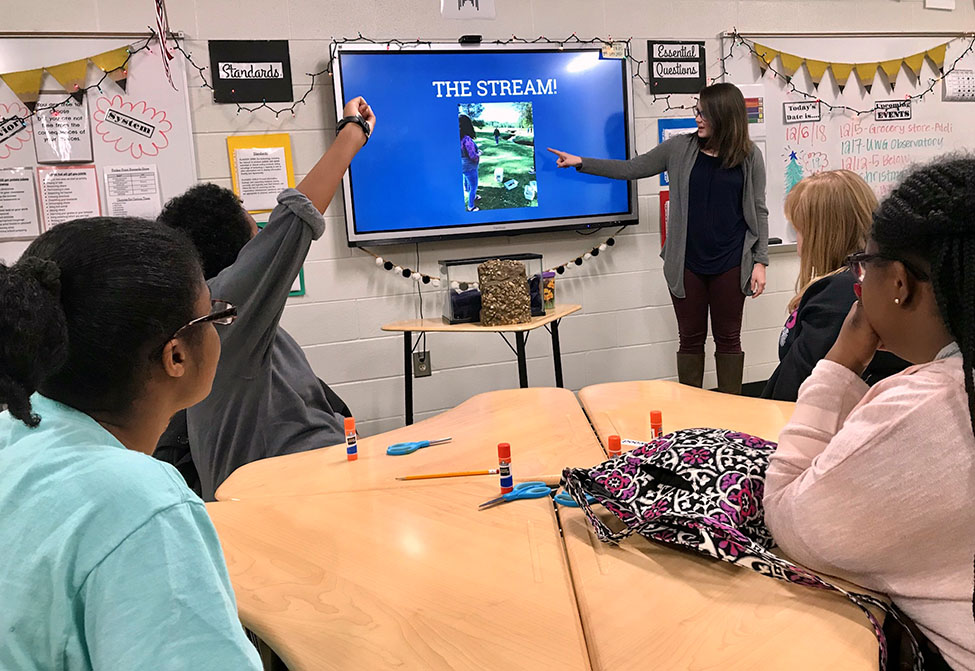
After the students with special needs returned to the classroom, they reflected on their experiences by completing a graphic organizer that included four sections: “What I saw,” “What I did,” “What I learned,” and “What I liked” (Figure 1), which they identified types of macroinvertebrates and equipment they used to make detailed observations. As an extension activity, the students with special needs who were proficient writers used this graphic organizer to create sentences (Figure 2) that detailed their experiences. The extension gave them an opportunity to work on their science communication skills while addressing literacy standards. If the students with special needs were unable to write sentences, they took pictures while outside and/or found pictures online to use in place of words on the graphic organizer. All students with special needs were able to locate and place pictures in the graphic organizer independently. Anecdotal evidence from the teachers suggests that these students gained valuable content knowledge about stream ecosystems and how to better make observations. Additionally, the excitement extended into their writing, which showed great literacy improvement compared to past works; we attribute this increase to the personal connection to the stream that students were able to make. They continued to learn and shared their appreciation by completing a creative arts project to gift to the ecology class, symbolizing their newfound love of science. The project was a collage of the organisms students discovered and learned about at the stream.
Tips for involving students with special needs
Involving students with special needs in projects with their general education peers, as we did with our stream project, can be a rewarding experience for all. We found the partnership between the science teacher and the special education teacher to be very important to the success of the project. The general education students in our project had already spent time at the stream and were knowledgeable enough to teach their special education partners how to engage in data collection. This allowed for each special education student to experience one-to-one learning from the beginning of the project and allowed the teachers to circulate between the groups and assist when issues arose. The collaboration allowed time for the teachers and university faculty to answer questions posed by all students as they conducted their paired investigations of the stream.
Our goal was to involve the students with special needs in collecting data immediately, so we designed the collaboration around activities in which the general education students had already been engaged. We started by doing simple activities, such as seining the stream and turning over rocks to look for macroinvertebrates. These activities provided all students with early success that helped build excitement and confidence, which were essential for moving to more difficult activities. The initial activities included making careful observations; more cognitively challenging activities were composed of calculating erosion and making determinations about the health of the stream based on numbers and types of macroinvertebrates.
In our experience, partnering students with special needs with their general education peers creates opportunities for collaborative and inclusive learning. The students with special needs enjoy being included and thrive when participating in inquiry-based activities and hands-on experiences. The general education students enjoy showcasing their knowledge and gain valuable practice with academic language and content knowledge by teaching their peers. They also become aware of and show compassion for their peers with special needs. The following are pedagogical guidelines we used to best serve our students during the activities:
- Narrow the content focus. Keep the content focus narrow, as opposed to broad in nature, as this will maximize success for students with special needs.
- Make it interactive. Hands-on experiences are key to providing opportunities for students with special needs to get involved.
- Use assistive technology. For example, all students used the Aqua Bugs app on iPads to classify macroinvertebrates. When writing about their experiences, they used the voiceover and speech-to-text features to independently express their ideas.
- Design opportunities for multiple means of expression. Students with special needs were able to express themselves in writing and through art by designing posters to combat littering and raise awareness about the importance of protecting the environment.
- Take video and picture documentation. Students with special needs used iPads to capture videos and pictures to document their work.
- Think outside the box. Focus on what will engage students with special needs and keep their interest. If they are interested in the material, they are more likely to engage with the activity.
The future of the project
The experience showcased the potential for high interest and engagement in inquiry-based STEM activities for students with special needs. Moving forward, the teachers have planned more opportunities for involvement of the special education students. Due to the sustained student excitement, interest, and engagement observed by the teachers for both groups of students, more opportunities for collaborative science experiences will take place at Carrollton High School. Also, because the health of our local streams is an ongoing concern in our community and more data collection is needed, this activity is being expanded within the high school and extended to other schools in the Carrollton City school system. Eventually all grade levels (K–12) will have opportunities to study the streams crossing their school grounds. The benefits of pairing general education and special education students, along with continued experiences in nature through content integration, will have a wider-ranging impact on scientific literacy for our students (Zouda 2016).
The activities linked to the NGSS
| Activity | Science and Engineering Practice | Disciplinary Core Idea | Crosscutting Concept |
|---|---|---|---|
| Profiling and surveying | Asking Questions and Defining Problems; Developing and Using Models | HS-ESS2-5: Plan and conduct an investigation of the properties of water and its effects on Earth materials and surface processes. | Structure and Function |
| Macroinvertebrate analysis | Planning and Carrying Out Investigations; Analyzing and Interpreting Data; Using Mathematical and Computational Thinking | HS-LS2-6: Evaluate the claims, evidence, and reasoning that the complex interactions in ecosystems maintain relatively consistent numbers and types of organisms in stable conditions, but changing conditions may result in a new ecosystem. | Scale, Proportion, and Quantity Stability and Change |
| Chemical analysis | Planning and Carrying Out Investigations; Analyzing and Interpreting Data; Using Mathematical and Computational Thinking | HS-LS2-7: Design, evaluate, and refine a solution for reducing the impacts of human activities on the environment and biodiversity. | Stability and Change |
| Stream remediation design | Constructing Explanations and Designing Solutions; Obtaining, Evaluating, and Communicating Information | HS-LS4-6: Create or revise a simulation to test a solution to mitigate adverse impacts of human activity on biodiversity. | Cause and Effect |
Disabilities Environmental Science Inclusion Informal Education



